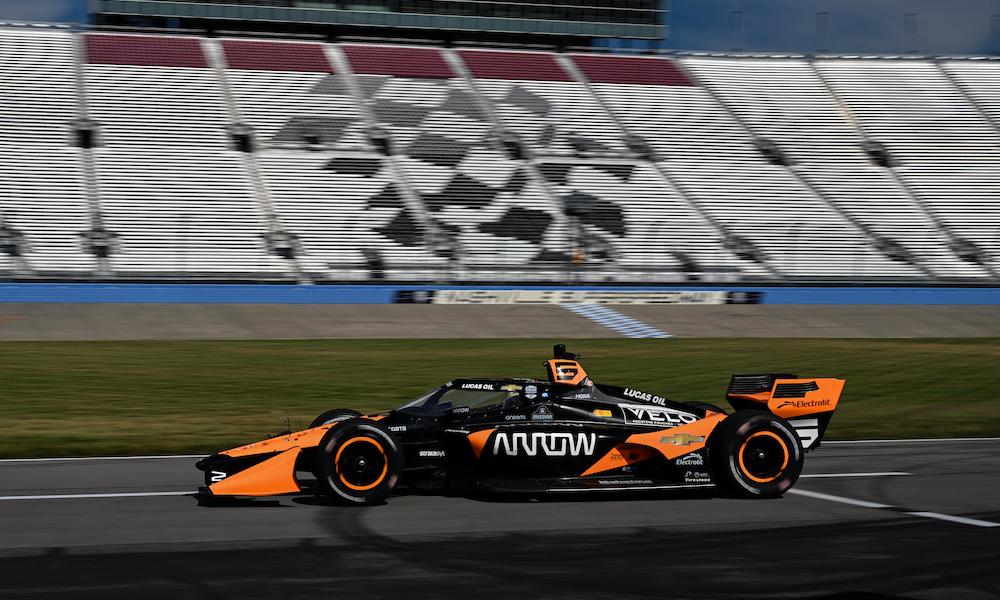The NTT IndyCar Series’ data-gathering test on Friday at Nashville Speedway provided plenty of information to use while forming the aerodynamic specification for the September 15 season finale on the 1.33-mile concrete oval.
The test was also an educational one for Firestone, which is said to have experienced some durability issues with one or more of the four cars in attendance. Arrow McLaren reported that Pato O’Ward crashed during the test, but didn’t say whether the issues were linked.
RACER understands the early running saw lap speeds produced in the 190mph range, and with more tuning to Andretti Global’s No. 26 Honda for Colton Herta, Arrow McLaren’s No. 5 Chevy for O’Ward, Ed Carpenter Racing’s No 20 Chevy for Ed Carpenter, and Rahal Letterman Lanigan Racing’s No. 15 Honda for Graham Rahal, the test closed with average speeds around 200mph.
[lawrence-auto-related count=3 category=1408]
“It reminds me a lot of Texas,” O’Ward told RACER. “The surface is a lot rougher because it’s concrete, so It honestly feels like rubber against sandpaper. It is bumpy. But honestly, it was actually pretty fun. I was a big fan of the low downforce configuration, because even the lead car cannot be flat. So it actually helped. Then you can really get creative with how you’re going through the corner.”
While it was O’Ward’s first visit to Nashville, Carpenter raced there in the Indy Racing League and IndyCar Series days from 2004-2008 and found the facility to be in better shape than when he last saw it 16 years ago.
“It’s impressive how well it’s aged; it’s pretty much just like it was when we left it, from a surface standpoint,” Carpenter said. “It hasn’t really settled. The surface all looked exactly the same, and the facility looked better than I guess I had envisioned it. It’s definitely going to be a bit of a challenge for everybody you know.”

With two oval tests in a span of four days, the general take after the Tuesday’s Milwaukee Mile hybrid test was that a softer tire would present more opportunities for passing while some of the feedback from Nashville was that a harder tire might hold up better against the abrasion.
“Milwaukee could be a good race if Firestone brings a different tire,” O’Ward said. “If they decide to bring what we tested, I don’t know if it will. At Nashville, they’re gonna have to bring a different tire than what we tested.”
Carpenter pointed to the different chassis in use today — much heavier, but much safer than its predecessor in 2008 – as having the biggest impact on tire wear.
“I feel like the tires are different enough that it didn’t have that same effect from [2008] with wear and grating; the tires seem to behave fine in that regard,” he said. “I think it’s somewhat a function of the car and the weight. We’re easily 250 pounds heavier, and just with the way the car loads – with high vertical loads – that extra weight, I think is creating a bigger challenge than we probably anticipated. I don’t think it was the abrasiveness of the track that was doing it.”
Carpenter is excited for the change of venue, which moves from the downtown streets of Nashville to the speedway and an oval IndyCar season finale for the first time since 2014.
“I was talking to the media down there about that, and I never know how everyone feels about it, but to me, I think it’s a way better finish to a championship on an oval,” he said. “Instead of the chaos you can get on some street or road tracks, I think it just allows for there to be a little bit more of a heads-up race for a championship when it goes down to the wire.
